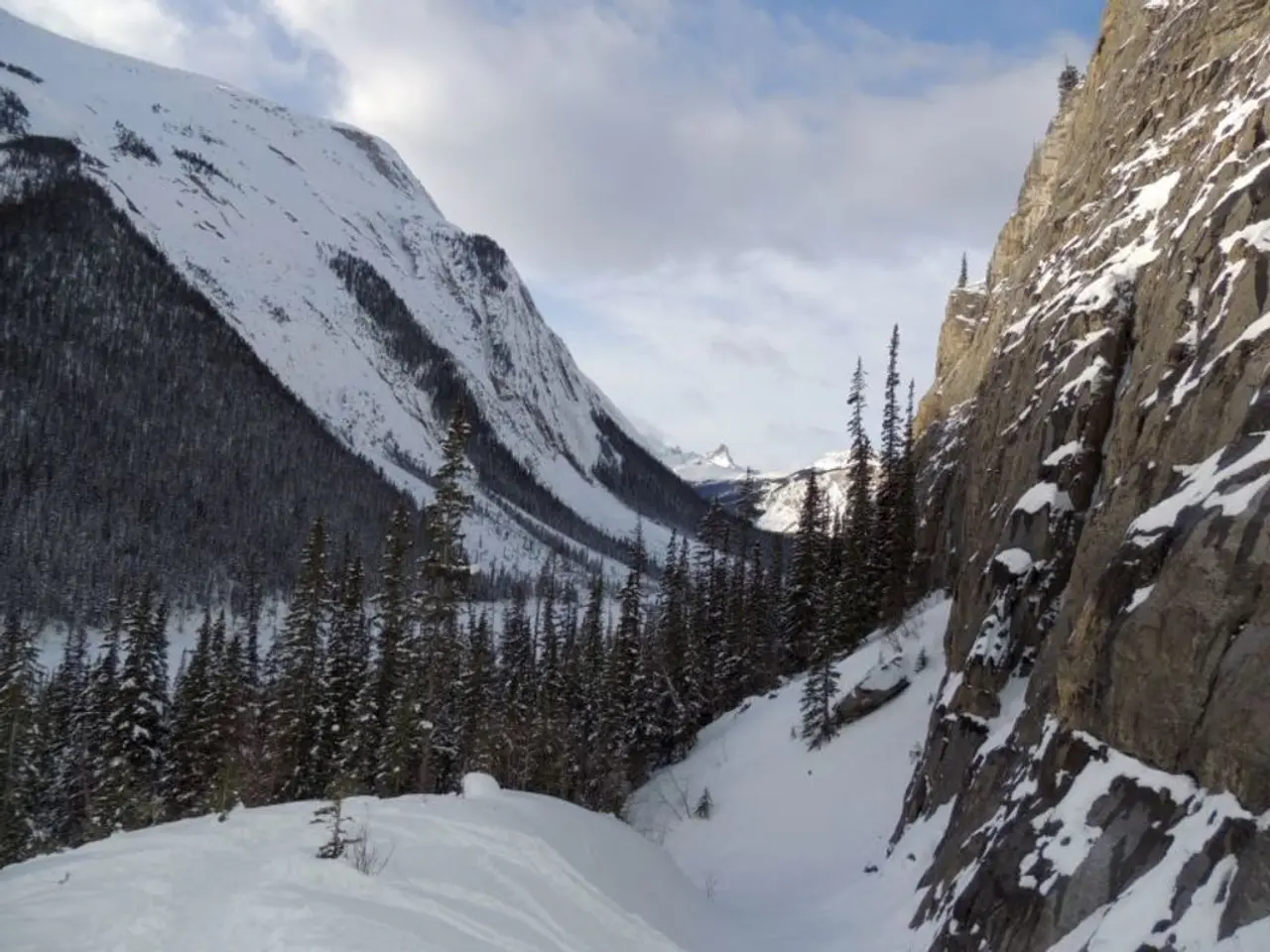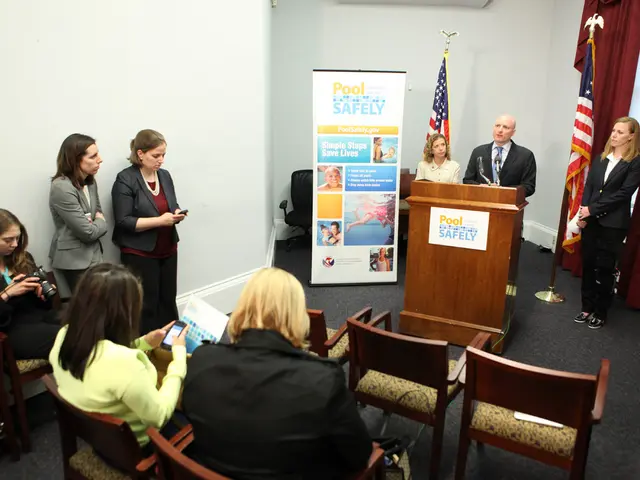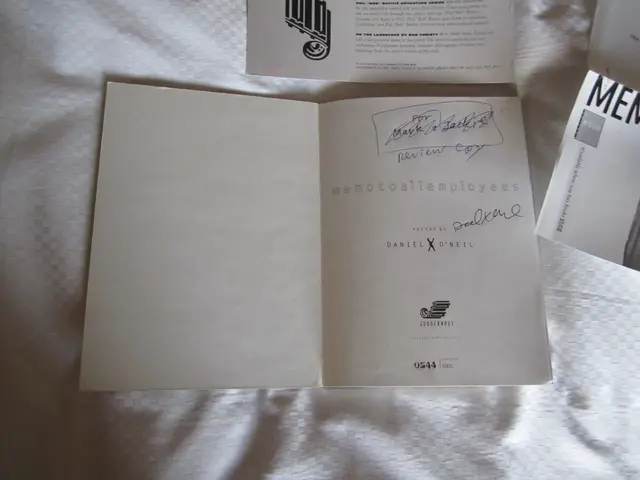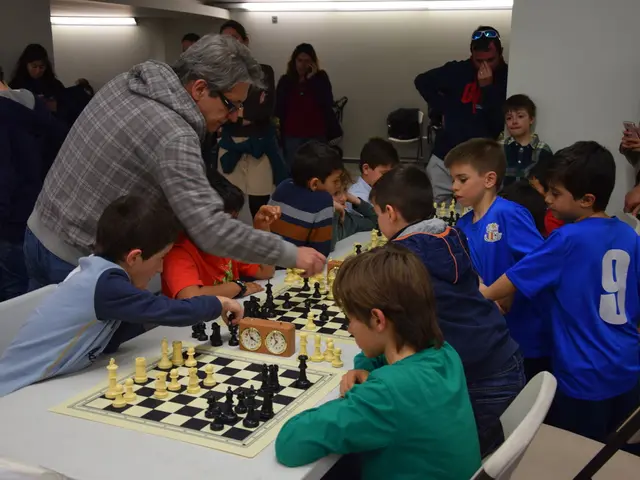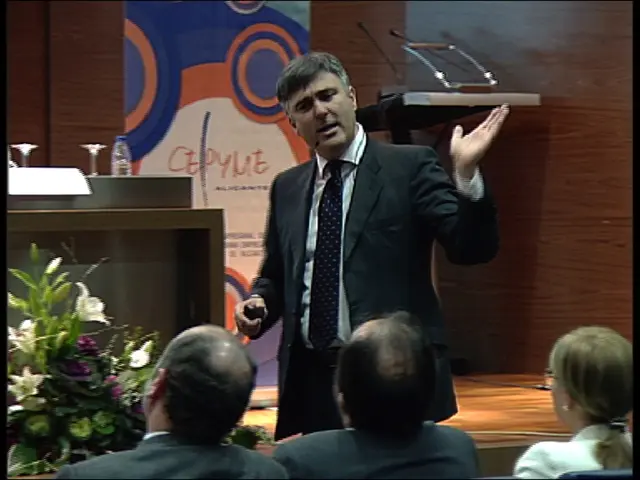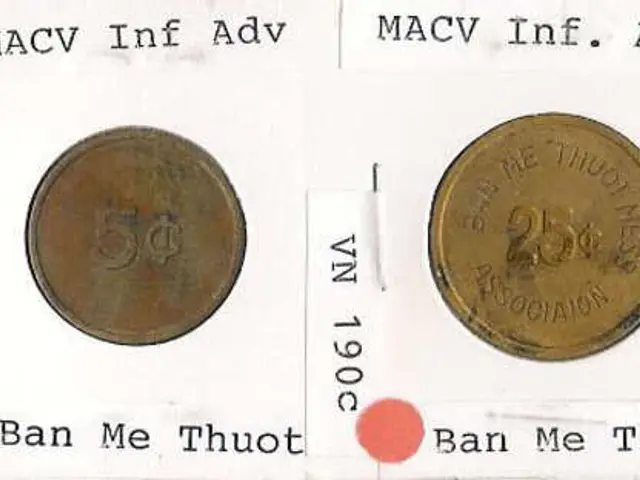Aurora Borealis potentially viewable in 18 American states from September 1 to 2
Headline: Spectacular Northern Lights Display Expected for Labor Day Weekend Across the U.S.
A powerful, Earth-directed coronal mass ejection (CME) erupted from the sun on Aug. 30, setting the stage for a potential spectacular northern lights display across the U.S. on Labor Day weekend.
This type of interaction, where one CME overtakes another, is known as a "cannibal CME". According to space weather physicist Dr. Tamitha Skov, there may be two Earth-directed solar eruptions involved in this event, with one possibly catching up to and merging with the other. The CME is expected to trigger G2 (moderate) to G3 (strong) geomagnetic storming, leading to significant enhancements in Earth's auroral oval.
The U.K. Met Office predicts visible auroras as far south as East Anglia, the Midlands, and Wales under clear skies. The best window for aurora viewing is Monday night into Tuesday morning (Sept. 1-2). The northern lights display could extend much farther south than usual, potentially visible for millions across the northern U.S.
The following 18 U.S. states appear fully or partially above the aurora view line: Alaska, Montana, North Dakota, Minnesota, Wisconsin, Michigan, Maine, South Dakota, Vermont, New Hampshire, Idaho, Washington, Oregon, New York, Wyoming, Iowa, Nebraska, and Illinois.
To catch the northern lights display, head to a dark location far from city lights, find a north-facing view with a clear horizon, look up around midnight to 2 a.m. local time, and be patient as auroras often come in waves and can appear faint at first.
Auroras are highly unpredictable, but your chances improve with clear skies, low light pollution, and a good view facing north. Downloading a weather app that provides aurora forecasts based on your location, such as "My Aurora Forecast & Alerts" (available for iOS and Android), can help in catching the display.
The "Space Weather Live" app (available on iOS and Android) can provide a deeper understanding of whether the current weather conditions are favorable for aurora sightings. Additionally, the arrival of the CME is expected to occur late on Sept. 1 into early Sept. 2 (UTC).
G3 geomagnetic storms can push auroras to latitudes as low as Illinois, New York, and Oregon, depending on local conditions. They can also cause radio disruptions and minor power grid fluctuations in some regions. The Kp index forecast predicts geomagnetic storming to peak at Kp 6.67 (G3 storm) between 06:00 and 09:00 UTC (2 a.m. to 5 a.m. EDT) on Sept. 2. Additional minor to moderate storming may continue into Tuesday night, Sept. 2-3.
So, grab your camera, bundle up, and prepare for a potential stunning display of the northern lights this Labor Day weekend!
Read also:
- Peptide YY (PYY): Exploring its Role in Appetite Suppression, Intestinal Health, and Cognitive Links
- Toddler Health: Rotavirus Signs, Origins, and Potential Complications
- Digestive issues and heart discomfort: Root causes and associated health conditions
- House Infernos: Deadly Hazards Surpassing the Flames
